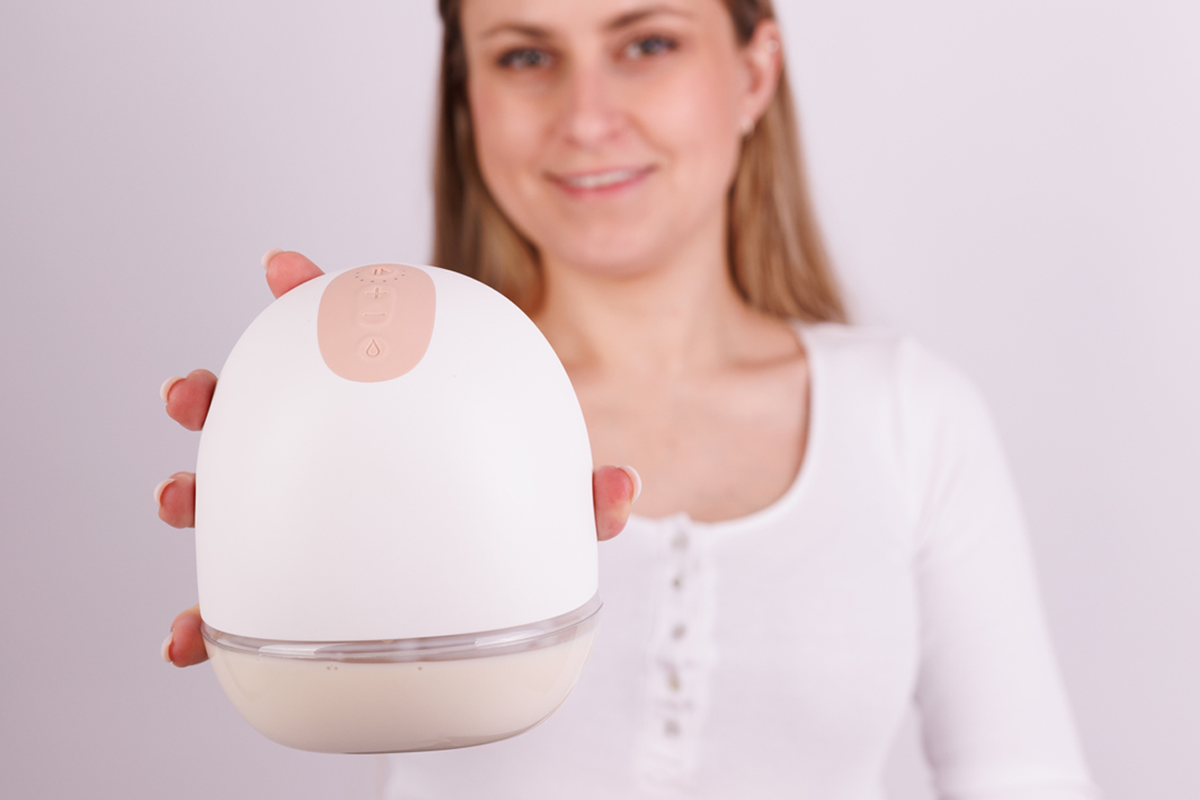Exclusive pumping can be a challenging journey, but with the right schedule, you can set yourself up for success. Whether you're pumping by choice or necessity, having a solid plan is crucial for maintaining your milk supply and balancing your daily routine. This guide will walk you through creating an effective pumping schedule tailored to your needs. From optimizing pump times to maximizing efficiency, we'll cover all the essentials. Plus, you'll learn how to adapt your schedule as your body and lifestyle change. Ready to take control of your pumping journey? Let's explore the ins and outs of building a schedule that works for you.
What is exclusive pumping?
Exclusive pumping, also known as EP, is a method of providing breast milk to a baby solely through pumping rather than direct breastfeeding. This approach involves expressing milk regularly using a breast pump and then feeding it to the baby via bottle or other means.
💡 Mothers may choose this option for various reasons, such as difficulty with latching, premature birth, or returning to work.
Advantages of Exclusive Pumping
- Ability to precisely track and monitor the baby's milk intake
- Allows others, such as partners or family members, to participate in feeding the baby
- Provides flexibility for mothers returning to work or school
- Helps maintain milk supply for mothers who have difficulty with direct breastfeeding or latching issues
- Enables mothers to build a freezer stash of breast milk for future use
Challenges of Exclusive Pumping
- Time-consuming, as mothers may need to pump 8-12 times per day initially to establish and maintain milk production
- Requires dedication and commitment to maintain an adequate milk supply
- Can be physically demanding and may lead to discomfort or fatigue
- Increased risk of decreased milk supply if pumping sessions are missed or inconsistent
- Potential for increased stress or anxiety due to the demands of pumping on a strict schedule
Exclusive pumping schedules for different stages
Adapting your exclusive pumping schedule as your baby grows is crucial for maintaining milk supply. Let's explore effective schedules for various stages.
Newborn to 3 months
During the first 3 months, establishing a consistent and frequent pumping schedule is crucial for maintaining an adequate milk supply. Working out ways to fit pumping sessions into your routine is key to long term success. Here is a recommended schedule for this stage:
- Pump every 2-3 hours, even overnight, to mimic a newborn's frequent feeding pattern
- Aim for 8-12 pumping sessions in a 24-hour period
- Each pumping session should last 15-20 minutes - or you can also express until your milk stops praying
- At least one session overnight, ideally between 2am and 5am when prolactin levels are hightest
- Track your pumping sessions and output to monitor your progress
💡 In the early days, you might be producing more milk than your baby needs. It can be useful to freeze any excess milk.
3 to 6 months
As your baby grows and your supply has established, you can gradually transition to a schedule with fewer pumping sessions while still meeting their nutritional needs.
- Pump 6-7 times per day, spacing sessions 3-4 hours apart
- Continue pumping at least once overnight to maintain milk production
- Pump sessions may last 15-20 minutes or until milk flow slows
- Adjust session duration based on your body's response and milk output
- Gradually increase time between pumping sessions as your baby's appetite grows
You may decide to not make any changes to your pumping schedule. You can also keep a record of your daily pumping outputs if you start reducing your expressing sessions to be able to monitor the effect on your overall milk supply.
On average, babies need 750ml of breastmilk per day between 1 and 6 months of age. You may want to pump slightly more than this to make sure you have enough milk when your baby goes through a grow spurt
6 to 12 months
Once your baby starts eating solids, you may start to notice a change in their milk requirements. You can adjust your pumping schedule and milk supply considering the following schedule:
- 5-6 pumping sessions per day,
- Pump approximately every 3-4 hours
- Each pumping session should last 15-20 minutes or until milk flow has stopped
- Maintain consistent pumping times to help regulate your milk supply
- If your supply remains stable, you may be able to drop the overnight pumping session
12 months and beyond
If you plan to continue exclusive pumping beyond 12 months, it's essential to maintain a consistent schedule to ensure an adequate milk supply for your growing baby. At this stage, you can :
- Adjust the schedule as needed based on your baby's appetite and your personal goals.
- If you feel ready to stop expressing milk it is important not to rush into dropping pumping sessions in order to avoid the risk of experiencing blocked ducts or mastitis. Your breast always needs to adjust so it is best to adopt a gradual approach.
Tips to make exclusive pumping easier
Exclusive pumping can be challenging, but there are ways to simplify your routine. Here are some tips to make your exclusive pumping schedule more manageable:
Invest in the right equipment
A high-quality, hands-free breast pump like the Perifit Pump can be a game-changer. Its wireless design allows you to pump discreetly anywhere, while the app lets you track milk levels without undressing.
The customizable rhythms and hospital-grade suction optimize each session. Finding the right flange size is key to comfort and efficiency—using our breast pump flange size chart can help you get the perfect fit.
Create a comfortable pumping station
Set up a cozy spot with everything you need within reach - snacks, water, entertainment, and pump accessories. This will help you relax and potentially increase milk output during pumping sessions.
Oxytocin is the hormone that triggers milk ejection reflex, be mindful of this when expressing. Looking at your baby or picture of your baby while expressing help!
Gently massage your breast before and during a pumping session, listening to music that you like, or reading a good book can be helpful too.
Schedule strategically
Plan your exclusive pumping schedule around your daily routine. Try to pump when your body naturally produces more milk, like early mornings. Cluster pumping sessions when convenient to maximize efficiency and maintain supply.
Storing Breast Milk
Properly storing breast milk is crucial for preserving its nutritional value and safety. At room temperature, fresh breast milk can be kept for up to 4 hours maximum.
For longer storage, refrigerate it for no more than 4 days. Alternatively, breast milk can be frozen for 6 months in a separate freezer door or up to 12 months in a deep freezer.
💡 Remember to label containers with the date and time of expression.
Use breast milk storage bags or clean, tightly sealed containers. When ready to use, thaw frozen milk overnight in the refrigerator or by placing it in warm water. Once thawed, consume the milk within 24 hours and do not refreeze it.
Can you skip a pump session?
While consistency is crucial for maintaining milk supply, life doesn't always align perfectly with your exclusive pumping schedule. Occasionally skipping a pump session won't derail your efforts, but it's important to understand the potential impacts.
When it's okay to skip
Missing one pump every now and then, especially if you make up for it later, is generally fine. Your body is resilient and can often compensate for small disruptions in your routine.
Potential consequences
Skipping pumps too frequently may lead to decreased milk production or engorgement. Listen to your body - if you're feeling uncomfortably full, it's best to pump, even briefly.
Strategies for flexibility
To maintain supply while allowing some wiggle room, try cluster pumping before a busy day or adding an extra session when possible. The Perifit Pump's portability makes it easier to stick to your schedule, even on-the-go.
How do I increase my milk supply when exclusively pumping?
Optimize your pumping routine
Increasing milk supply when exclusively pumping requires dedication and consistency. Start by establishing a regular pumping schedule, aiming to pump every 2-3 hours during the day and at least once at night. This mimics a baby's natural feeding pattern and signals your body to produce more milk.
Power pumping for a boost
Power pumping schedule can be an effective technique to increase supply. This method involves pumping for 20 minutes, resting for 10, then repeating this cycle for an hour.
💡 Try incorporating power pumping sessions 1-2 times a day for several days to stimulate increased production.
Hydration and nutrition matter
Stay well-hydrated and maintain a balanced diet rich in nutrients. Consider adding galactagogues - foods believed to boost milk supply - such as oatmeal, fenugreek, or blessed thistle to your diet.
Some lactating parents also use sunflower lecithin for milk supply, as it may help with milk flow and prevent clogged ducts.
💡 However, consult with a lactation expert before making significant dietary changes.
Can I switch from exclusive pumping to breastfeeding?
Transitioning from an exclusive pumping schedule to breastfeeding is possible and often successful with patience and persistence. Many parents find that gradually introducing direct breastfeeding while maintaining some pumping sessions can help ease the transition.
Tips for a smooth transition:
- Start with one breastfeeding session per day, ideally when your baby is calm and not overly hungry.
- Continue pumping after breastfeeding attempts to maintain milk supply and prevent engorgement.
- Gradually increase breastfeeding frequency as your baby becomes more comfortable.
As you move from pumping to breastfeeding, you might notice slight differences in breastmilk color between expressed milk and what you see during nursing. This is completely normal and can be influenced by factors like time of day, foremilk vs. hindmilk.
Every parent-baby duo is unique. Some may transition quickly, while others may need more time. Be patient with yourself and your little one as you navigate this change in your exclusive pumping routine.
Do I need a hospital-grade pump for exclusive pumping?
The choice between a hospital-grade or personal-use electric breast pump ultimately hinges on your specific needs and pumping goals.
While hospital-grade models are engineered for frequent, long-term usage with their robust suction power and efficient motors, making them well-suited for exclusive pumping, many high-quality personal-use double-electric pumps with adjustable settings can also serve this purpose effectively.
Ultimately, your decision should align with your individual pumping requirements and preferences.
You might need a hospital-grade pump if:
- You are exclusively pumping for a premature or medically fragile baby.
- You struggle with low milk supply and need a pump with stronger suction and stimulation.
- You need a highly durable pump for multiple pumping sessions per day over an extended period.
How do I stop exclusive pumping without pain?
Transitioning away from an exclusive pumping schedule can be challenging, but there are ways to make it more comfortable. The key is to gradually reduce pumping sessions to avoid engorgement and pain.
Slow and steady weaning
Start by slowly decreasing the duration of each pumping session by a few minutes every few days. This signals your body to produce less milk over time. Most people pump 8-10 times daily when exclusively pumping. Gradually drop one session at a time, allowing several days for your body to adjust before dropping another.
Comfort measures
To ease discomfort as you wean, try applying cold compresses between pumping sessions to reduce swelling.
Wearing a supportive, well-fitted bra can also help. Remember to express just enough milk to relieve pressure if needed, but avoid fully emptying the breasts to discourage continued production.
Exclusive pumping is a journey that requires dedication, but with the right schedule and mindset, you can achieve your goals. By following the tips and strategies outlined in this guide, you'll be well-equipped to establish a pumping routine that works for your unique situation. Be flexible and adjust as needed - what matters most is finding a sustainable rhythm that keeps your supply strong while fitting into your lifestyle. You might also consider feeding your baby on a scheduled feeding or demand feeding basis, depending on what best suits your routine and your baby’s cues. Stay positive, celebrate small victories, and don't hesitate to lean on your support system when needed. With patience and persistence, you'll master the art of exclusive pumping and provide nourishment for your little one.





